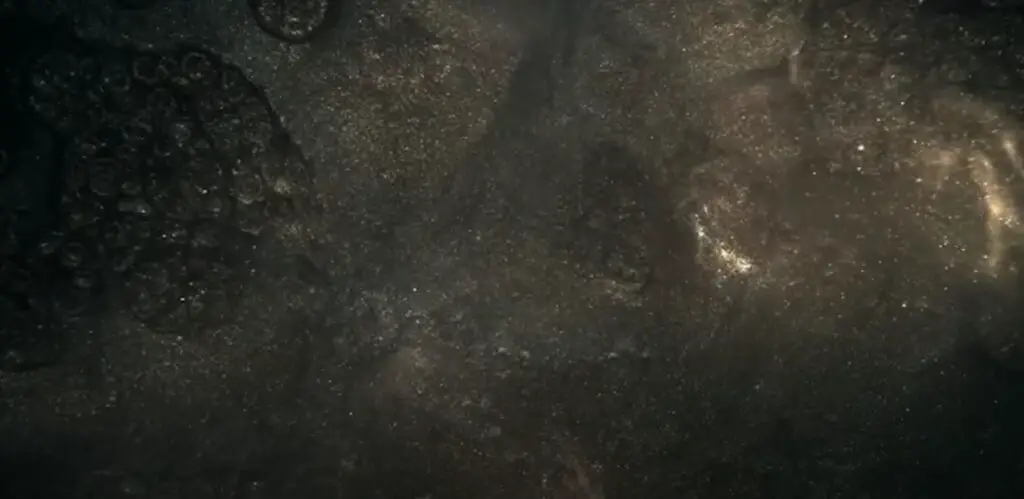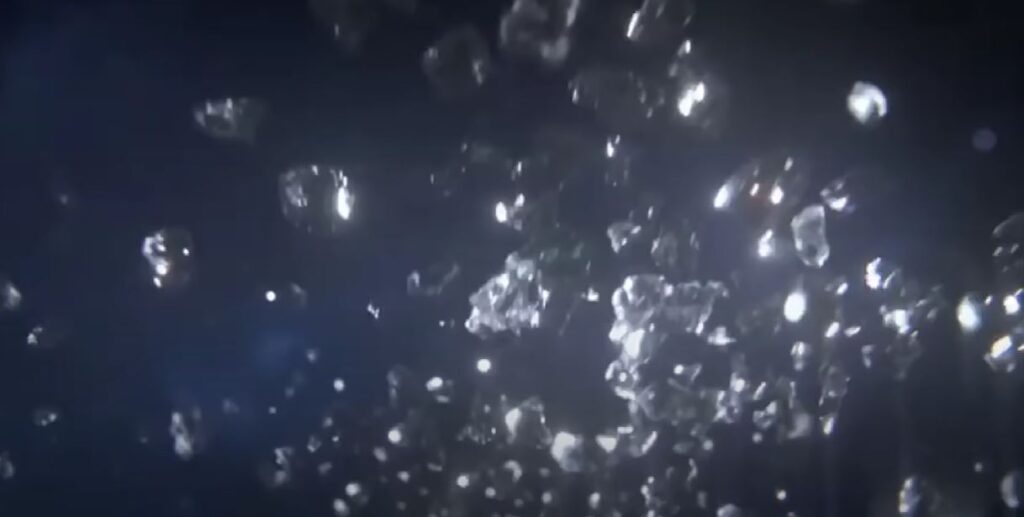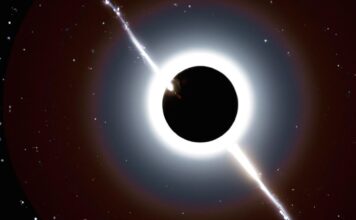Imagine a world where clouds are made of metal and rubies and other sapphires rain down from the sky. According to a recent analysis of the nocturnal atmosphere of exoplanet WASP-121b, this could be the reality. Details of the study are published in Nature Communication .
The “dark side” of a hot Jupiter
In 2015, astronomers announced the discovery of a new planet named WASP-121 b, 880 light years from Earth. This planet is what is known as a ” hot Jupiter “, a class of gas giants with physical similarities to Jupiter, but moving so close to their star that they only show them one side (tidal lock, like the Moon with the Earth). WASP-121 b is no exception to this rule.
In a recent study, researchers relied on Hubble to make the first detailed measurement of the atmosphere on the night side of the planet. On the daytime side, WASP-121b’s upper atmosphere can reach temperatures of around three thousand degrees Celsius , so metals and minerals evaporate. On the night side, however, the team discovered that atmospheric temperatures were halved .
This temperature difference favors the formation of strong winds from west to east around the planet, carrying the decomposed water molecules through the atmosphere from the day side to the night side. Separated into hydrogen and oxygen atoms, these atoms exposed to “cooler” temperatures combine again to form vapour. This is then carried back to the dayside by the winds and the cycle continues.
That said, temperatures on the night side are never low enough for water clouds to form during this cycle. However, this does not mean that clouds do not form at all.

Metallic clouds and showers of precious stones?
Previous data had already shown signs of metals such as iron, magnesium, chromium and vanadium existing in the planet’s atmosphere. In this study, the researchers found that it is cold enough on the night side for these metals to condense into clouds . And just like water vapor, these clouds of metal are regularly blown off the day side of the planet where they will evaporate, before condensing again on the night side, and so on. Finally, metallic clouds aren’t the only weird phenomenon going on on the night side. According to the authors, “ rains of liquid gems ” could also form .
Scientists were indeed surprised to note the absence of aluminum in the atmosphere of the planet. According to them, this could be explained by the condensation of metal rains in the lower levels of the atmosphere, outside the scope of observations. This metallic vapor would then see the aluminum condense with the oxygen, forming corundum. However, according to the statement, it is a metallic compound that would form what we know on Earth as rubies or sapphires when contaminated with other metals that may be present in the atmosphere. of the planet.

“ It’s exciting to study planets like WASP-121b that are very different from those in our Solar System. The latter indeed allow us to see how the atmospheres behave in extreme conditions ”, underlines Joanna Barstow, of The Open University (United Kingdom).
This work therefore sheds new light on the ongoing atmospheric dynamics on the night side of a hot Jupiter. However, there is still much to learn. To do this, the team plans to further explore this exoplanet with the James Webb Telescope during the first year of its operation.




